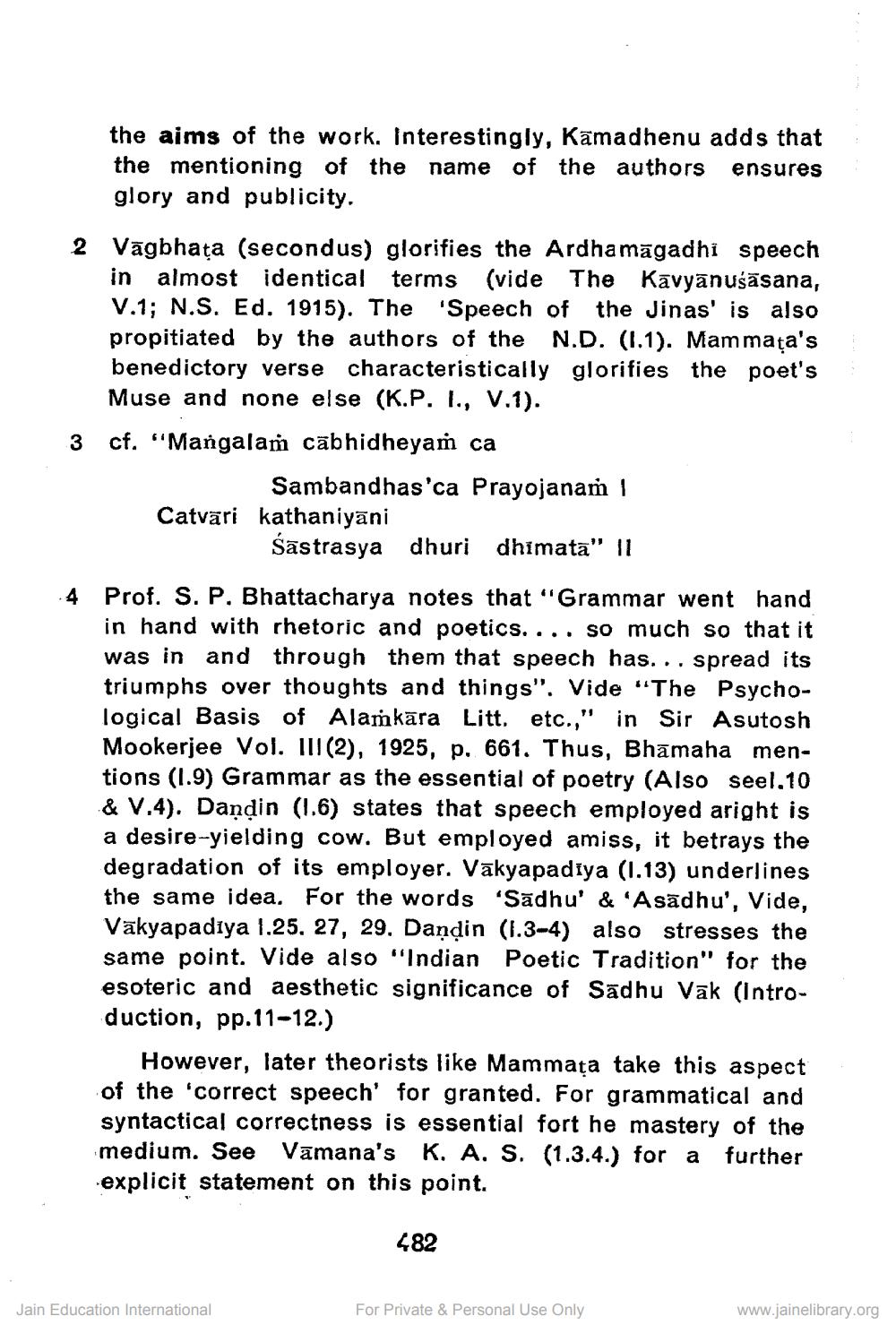________________
the aims of the work. Interestingly, Kamadhenu adds that the mentioning of the name of the authors ensures glory and publicity.
2 Vāgbhata (secondus) glorifies the Ardhamāgadhi speech
in almost identical terms (vide The Kavyānušāsana, V.1; N.S. Ed. 1915). The 'Speech of the Jinas' is also propitiated by the authors of the N.D. (1.1). Mammața's benedictory verse characteristically glorifies the poet's
Muse and none else (K.P. I., V.1). 3 cf. "Mangalaṁ cābhidheyam ca
Sambandhas'ca Prayojanaṁ 1 Catväri kathaniyāni
Šāstrasya dhuri dhimata" 11
4 Prof. S. P. Bhattacharya notes that "Grammar went hand
in hand with rhetoric and poetics. ... so much so that it was in and through them that speech has... spread its triumphs over thoughts and things". Vide "The Psychological Basis of Alamkāra Litt. etc.," in Sir Asutosh Mookerjee Vol. II(2), 1925, p. 661. Thus, Bhāmaha mentions (1.9) Grammar as the essential of poetry (Also seel,10 & V.4). Dandin (1.6) states that speech employed aright is a desire-yielding cow. But employed amiss, it betrays the degradation of its employer. Vākyapadiya (1.13) underlines the same idea. For the words 'Sadhu' & 'Asādhu', Vide, Väkyapadiya 1.25, 27, 29. Dandin (1.3-4) also stresses the same point. Vide also "Indian Poetic Tradition" for the esoteric and aesthetic significance of Sādhu Vāk (Introduction, pp.11-12.)
However, later theorists like Mammața take this aspect of the 'correct speech' for granted. For grammatical and syntactical correctness is essential fort he mastery of the medium. See Vamana's K. A. S. (1.3.4.) for a further explicit statement on this point.
482
Jain Education International
For Private & Personal Use Only
www.jainelibrary.org




